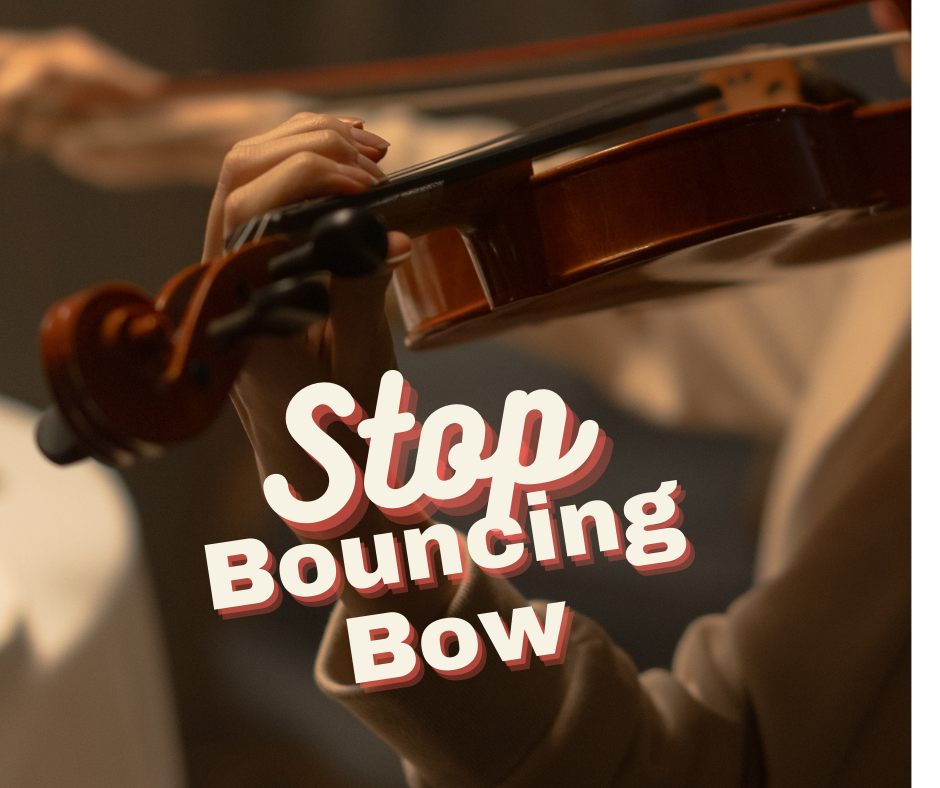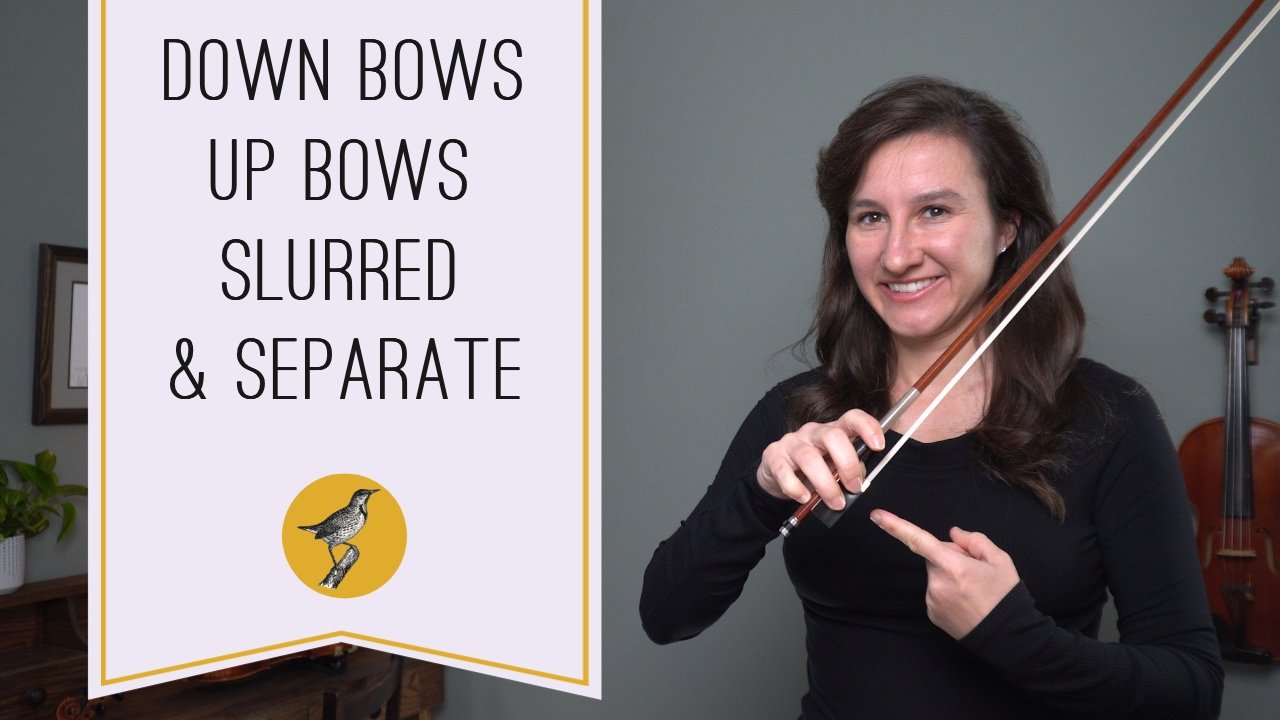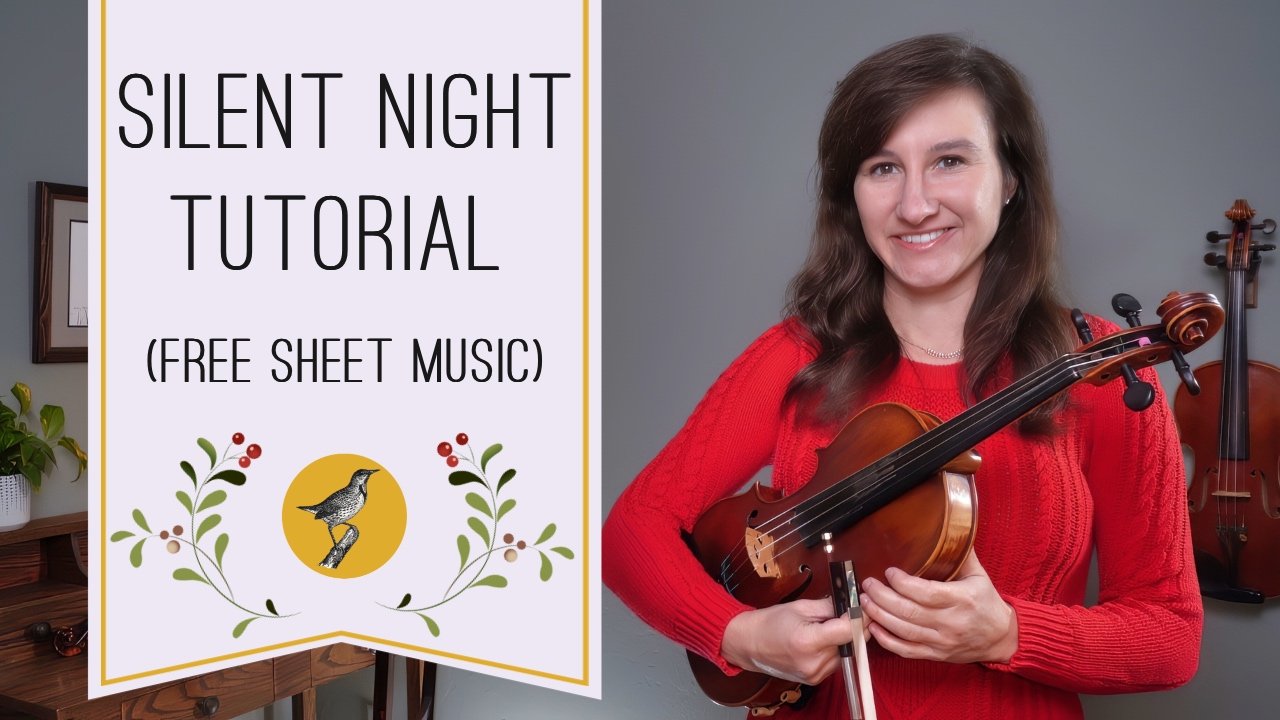10 Reasons Why Your Violin Bow is Bouncing and How to Stop It!
/If you are starting to learn the violin, you may be asking yourself the question that all students ask at some point: “Why is my violin bow bouncing?” Or perhaps, “How do I bow smoothly on the violin?” Or “how do I stop my violin bow from shaking?”
If those thoughts have come to mind, you’re not alone! All violinists deal with unintentional bouncing bows. Violinists often blame bouncing bows on nerves when performing, but many of my violin students complain about bouncing, shaky bows when they are practicing by themselves in the comfort of their own homes!
There’s a reason bouncing bows affect nervous performers and beginners alike. Tension.
Just trying to relax is harder than it sounds. If you want to fix your bouncing violin bow, I’m going to cover 10 reasons why your violin bow is bouncing and how you can make it stop!
First, let’s cover 3 reasons why your violin bow is bouncing that don’t have to do with tension.
Why Does My Violin Bow Bounce When I Play
1. Not Using Good Equipment
It might not be you. If your violin bow is bouncing when you play, it could be poor quality equipment. A cheap violin outfit (anything under $200-$500) means a cheap violin bow, a cheap violin, and cheap strings—all of which can contribute to a shaky violin bow and prevent you from bowing smoothly.
Check out my top picks for violins and strings here.
2. Not Starting From The String
Before you start playing, make sure your violin bow is set on the string. Then move the bow. If you are coming down to the string and want to play a note as soon as your bow hits the string, that speed you have coming down is going to translate into a BOUNCE! Think about a bouncy ball or landing an airplane. Excess speed and descent rate= bouncing bows.
3. Not Starting or Playing in the Right Place in the Bow
Some parts of the violin bow are bouncier than others (like the middle). To stop the violin bow from bouncing, try bowing in a different area, like the lower half.
Why Tension Makes Your Violin Bow Bounce
4. Not Warming-up or Stretching Before You Play Violin
Any tension, anywhere in your body, can create stiffness which leads to a shaky violin bow. Stretch before you play the same way you would stretch before you go for a run.
Warming-up includes open strings and scales. This is vital to warming-up your muscles so you can bow smoothly on the violin.
Are your scales getting boring? Or perhaps you don’t practice scales at all (*gasp*). Download my free violin scale book here! It’s got lots of different exercises to keep you engaged.
5. Using Pressure Not Weight To Get A Good Tone
You can’t let your violin bow gloss over the strings. You have to apply some sort of downward force to “dig into” the string to produce a tone. You want to use the relaxed weight of your shoulder and arm to produce this tone. The weight should transfer from your relaxed shoulder through your bow arm through your wrist and fingers into the bow.
What you don’t want to use is pressure. Pressure is using just your hand or fingers to “press” the bow into the string. This always results in tension as well as bouncing bows, shaky bows, scratchy sounds and a myriad of other unwanted noises.
6. Tensing Up Your Bow Hold
If your bow hold is not formed correctly, or if you are gripping the bow, it’s impossible to transfer that relaxed weight from the shoulder and arms to the fingers. That relaxed sound will stop as soon as it reaches your fingers and your violin bow will shake, wobble, and roll. Okay, it might not roll, but it will do things you don’t want it to do…
In my Complete Beginner’s Course, I’ll show you the right way to hold the bow, and the common mistakes people often make with the bow hold that lead to bow bouncing.
7. Having Improper Right Arm Position
Relaxed weight is like gravity. It can only go one way: down. If your elbow is below your wrist while you are playing, you can’t transfer the relaxed weight up your arm to your wrist and fingers. So position your bow elbow so it is even with your wrist (it can be slightly below your wrist but not too much). Also make sure your wrist is above your fingers so all the weight can be transferred down. This will help stop shaky violin bow.
8. Not Transferring the Right Amount of Weight into the Bow
Depending on where you are playing (upper, middle, or lower half), you have to transfer the right amount of weight into the bow. Too much or too little weight can cause the violin bow to bounce while you are playing. The amount of weight also differs depending on what string you are playing. I know, I know…it’s complicated. If you are getting overwhelmed or confused, keep reading. I’m going to tell you how fix all of these problems.
9. Tensing Up During Changes in Bow Direction
While you are chaging bow directions, the weight must be transferred to the bow smoothly on the violin. Students tend to add too much weight when going from an up bow to a down bow, which makes the violin bow bounce. Imagine throwing a bouncy ball down on the ground. This is the same thing that happens when you add too much weight or you tense up when change directions.
A common problem I see is the violin bow bouncing when students change from an up bow to a down bow. (Watch this video to learn why the bow bounces here and how to fix it).
10. Not Playing Long Enough, Being Out of Practice, Getting Frustrated While You Play
Bowing smoothly on the violin takes time. Your muscles have to learn how to control bow bounces on the violin. You wouldn’t expect a newbie weight-lifter to be able to lift hundreds of pounds without effort? Those muscles must be conditioned and trained. It’s no different when learning not to bounce your bow on the violin. Give yourself time!
If it’s been a while since you’ve played, that might be a reason your violin bow is bouncing. Your muscles simply aren’t warmed-up and relaxed.
And last of all, if you keep asking yourself over and over again “why does my violin bow bounce when I play?” You are probably getting frustrated during your practice time. Frustration leads to tension which causes your violin bow to bounce. When you get frustrated, walk away and come back when you are more relaxed.
How Do I Stop My Violin Bow From Bouncing?
Now that you know the 10 reasons why your violin bow is bouncing, how do you stop the violin bow from bouncing?
Here’s the best practice routine to prevent tension, shaky bows, and develop a relaxed tone.
1. Practice regularly
2. Stretch Before You Play
3. Warm-up on open strings and scales
4. Experiment
Experimenting is probably the most important way you are going to stop your violin bow from bouncing. You must take time to experiment. I can’t tell you exactly what muscle you need to relax to stop your bow from bouncing, you have experiment to find out what you need to do to stop the bounce. Play lots of open strings with varying weight. Practice bow changes on open strings. Practice long bows, short bows, you name it!
So go ahead, let your bow bounce! Then try to figure out why it bounced. Go through the 10 reasons your bow is bouncing then try again. If you take time each day to experiment, let yourself make mistakes and learn from them, I promise you will stop your violin bow from bouncing!
The Best Thing You Can Do To Stop Your Violin Bow From Bouncing
What’s my number one piece of advice when helping students stop bouncing violin bows? Learn to make the bow bounce on purpose! When you intentionally bounce the bow, it’s called spiccato. You don’t have to be an advanced violinist to learn the basics of spiccato. In fact, learning the basics will help you understand the physics behind why your bow bounces and will help your muscles to learn how NOT to bounce.
In my course, The Secret to Better Bow Control, I’ll show you how to play spiccato. Not only will it teach you better bow control, it will help you to stop letting your bow bounce. The course is part of my Online Studio Membership. Learn more here.
Happy Practicing!





















![10 Best Violins for Beginners [2024] A Violin Teacher’s Ultimate Guide](https://images.squarespace-cdn.com/content/v1/554545e3e4b0325625f33fa6/1600433065588-JQV56M1W9LNI833AVGEE/10+best+violins+for+beginners+2020.jpg)



